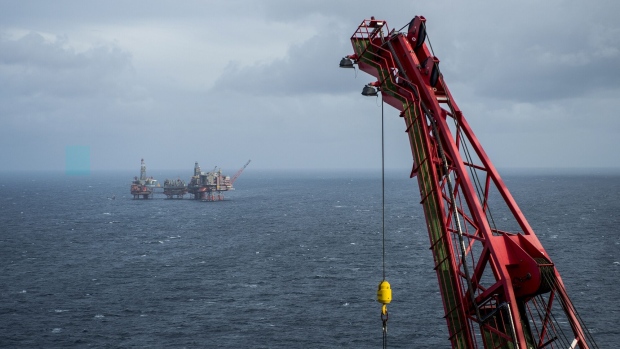Sep 4, 2023
UK North Sea Carbon Emissions Fall for Third Consecutive Year
, Bloomberg News

(Bloomberg) -- Greenhouse gas emissions from offshore oil facilities in the UK fell for a third consecutive year in 2022 even as production grew, according to a report published by the industry’s regulator.
Direct emissions were 3% lower than a year earlier, bringing the decline in greenhouse gases resulting from the process of extracting oil and gas to 23% since 2018. The data do not take into account the carbon released when end users burn the fuels — known as Scope 3 emissions — which are likely to have risen alongside production.
While the UK industry is on track to hit interim reduction targets of 25% by 2027, “bold measures” will be needed to deliver the pledged 50% reduction in direct emissions by the end of the decade, the UK North Sea Transition Authority said in a report published on Tuesday.
Greenhouse gas emissions from upstream oil and gas production in the UK peaked in the early 2000s, and have been trending lower since then in line with declining production, the decommissioning of older facilities, and initiatives to reduce methane leaks and flaring.
The regulator implemented an obligation in 2021 that requires the oil and gas industry to help the UK reach net-zero emissions by 2050. It also published guidance stating that new developments should have no routine flaring or venting of gas across all facilities by 2030.
The average carbon intensity of oil and gas produced in the UK was 21 kilograms of CO2 per barrel of oil equivalent last year, about a quarter of the level for imports of liquefied natural gas but more than twice as high as pipeline imports from Norway, where routine flaring is banned, according to the report.
©2023 Bloomberg L.P.






